Figuring out how to save on the electricity bill is easy once you take a few small actions toward it. Of course, there are quick and easy ways and there are more involved ways. But the good news is, there are things you can do today to reduce your energy use (and your power bill!).
According to the U.S. Department of Energy, most households use about 886 kilowatt hours (kWh) per month of energy. To find out how to save on the electricity bill, look at your monthly statement and figure out how much your family is using. From there, make a plan to bring it down. Here are a few things you can do to reduce energy usage and lower your monthly electricity charges.
1. Find out how to save on the electricity bill with “cool credits” through your power company.
Power companies in select states offer a program that gives you a small reduction on your monthly bill in exchange for allowing them to cycle your air conditioning. For example, where I live, you can get a $5 per month credit on your power bill if you enroll in the program. The power company comes out and installs a small device next to your air conditioner, giving them the ability to control it for small snippets of time. There are parameters; like they won’t do it on weekends or holidays. And they’ll only do it for a few hours at a time.
2. Lower your electric bill by replacing your light switches with programmable ones.
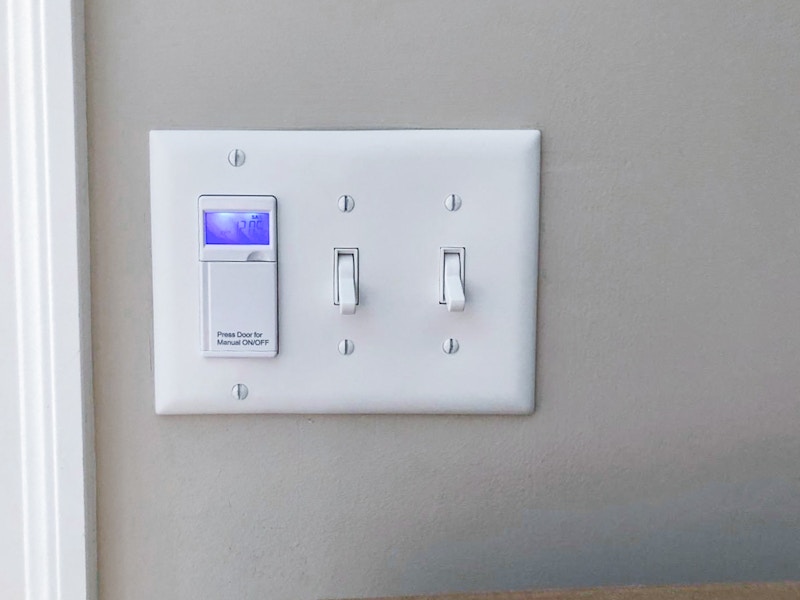
Programmable light switches are inexpensive and easy to install. You might spend $15 – $25 on a switch, but they can control your lights and fans, so the next time someone forgets to turn a light off when they leave a room, it’ll go off automatically.
Looking at lightbulbs alone. If you have LED lightbulbs in your home, let’s say they average 10 watts each. The average price per kilowatt hour in the U.S. is $0.178. If you leave a light on for one hour, that costs you $0.00178, which is not very much. But if we consider leaving a light on for five hours a day, every day, for a year — we’re looking at $3.25. Again, not a lot. But, if you multiply that by all the electrical appliances and devices in your house, it can add up big.
3. Get super smart. (You know, with smart plugs and bulbs.)
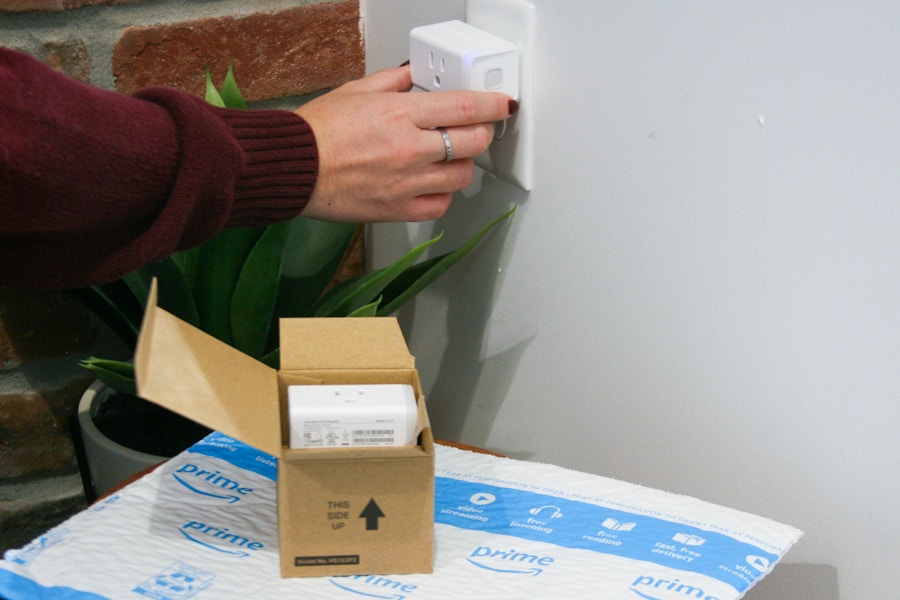
Here’s how to save on the electricity bill the easy way. Smart plugs and smart bulbs! Smart plugs will unplug your gadgets automatically and smart bulbs will turn off on a timer. Amazon often has deals on these, and during certain times of the year (Black Friday, for example), expect to see Amazon Smart Plugs for about 40% off. Also during Black Friday, and again for Amazon Prime Day, you’ll find free smart bulbs with Echo Dot purchases.
4. Use smart power strips too.
Rinse and repeat what I said about smart plugs and bulbs. Smart power strips will do what a smart plug does but on a larger scale. Turn off multiple electronics at once to cut down on your electricity bill.
5. How to save on the electricity bill: Stop “vampire energy” from draining your wallet.
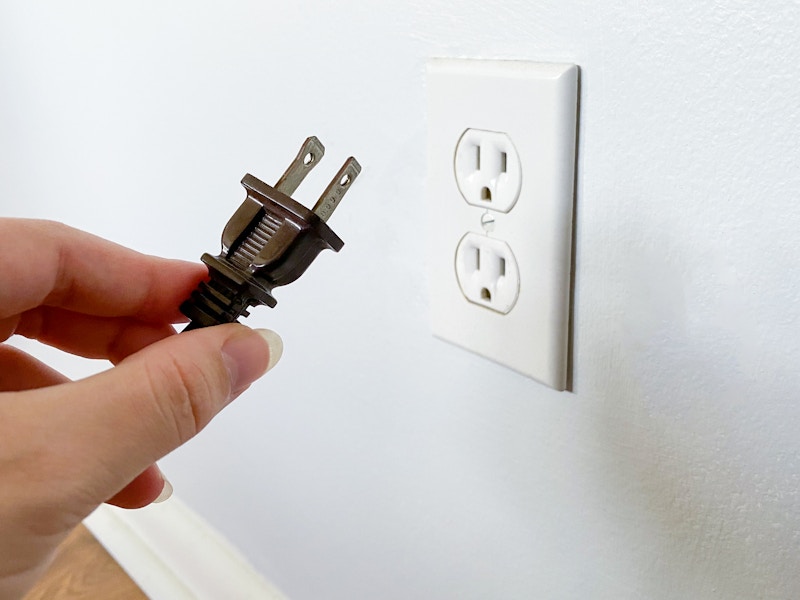
“Vampire energy” is exactly what it sounds like. Power that’s being sucked up, usually without you even realizing it. Even if it’s not in use! I’m talking about phone chargers, TVs, microwaves, coffeemakers, printers, etc. draining power just because they’re connected to a socket. The average American can spend several hundred dollars a year on inactive electronics. One easy solution is to plug these things into an outlet only when you’re using them. Pull the plug when you’re done.
6. Get a programmable thermostat.

Something like a Nest thermostat can save you money because it turns itself down when you leave the house. Also, you can control it remotely through your smartphone, so if for whatever reason, you want to change the settings while you’re at work or the grocery store, you can.
Nest thermostats run a little over a hundred dollars, but you can often find them on sale at Amazon or Best Buy. Plus, many energy companies offer a rebate when you purchase a smart thermostat. We see an average of $50 rebates from most companies. So if you spend $100 on a smart thermostat during Prime Day, the $50 rebate brings the net cost to just $50.
7. Put your thermostat in a better location.
If your thermostat is in direct sunlight or subject to drafts, you’ll pay more on your power bill since the air conditioning will get triggered when it’s perhaps not necessary. Another bad spot for your thermostat is next to the TV or lamps or any other item that gets hot when it’s in use. Instead, think about putting it in a dark hallway or the like.
Some thermostats come with sensors you can put in specific rooms and set the temperature based on that room only. This helps cut down on energy use if your thermostat is in an undesirable place.
8. Set your air conditioner so it’s a couple of degrees warmer than usual.
With A/C, the name of the game is using it less. But when it’s hot in the summer, the name of the game is staying cool, and there’s the rub. According to the Department of Energy, you can save as much as 10% a year on heating and cooling by simply turning your thermostat back 7 – 10 degrees for 8 hours a day from its normal setting. This means, try setting your A/C to 78 degrees while you’re at work during the summer. Or set your heat closer to 60 degrees while you sleep in the winter.
It’s worth noting that the percentage of savings from this setback is greater for buildings in milder climates than for those in more severe climates.
9. Don’t crank your air conditioner way down thinking it’ll cool faster.
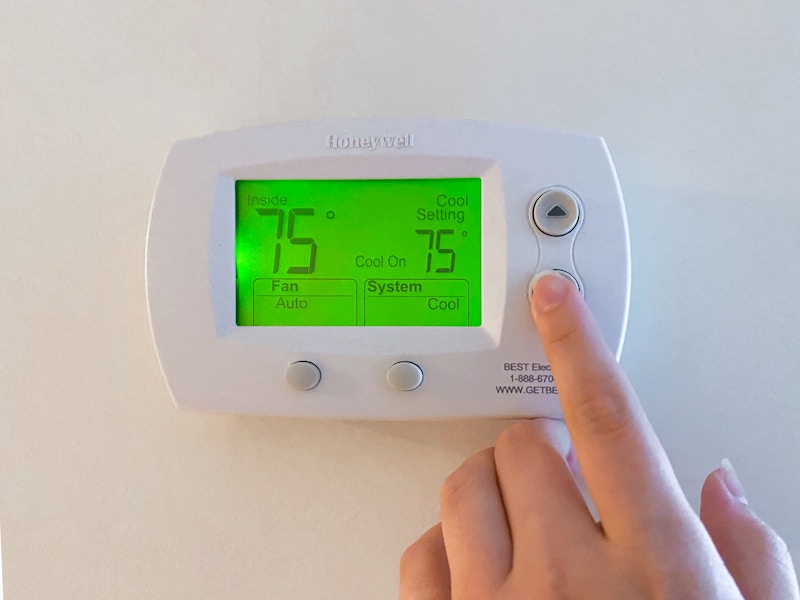
You get home, and the house is way too warm because you’re trying to save on your electricity bill. It might be tempting at this moment to set the A/C to the lowest possible setting in order to get that sweet, cold air flowing faster. But don’t do it. Setting your A/C lower than you want doesn’t cool your home faster, and it can actually use more energy, resulting in a higher electric bill.
10. Find out how to save on the electricity bill by upping your ceiling fan game.

First, fans cool people by producing wind; they don’t cool rooms. So turn off your fans when nobody is in the room to conserve energy.
Next, make sure the fan is blowing counterclockwise to create a cool, downward airflow. In winter, when it’s cold out and you want to keep the warm air coming, set it to turn clockwise. This way, the warm air that rises to your ceiling can circulate back down.
Need a ceiling fan that changes direction? Amazon has some good options. Otherwise, watch for a sale at Home Depot or Lowe’s.
11. Install window coverings that’ll block sunlight (and heat!) to lower your electric bill.
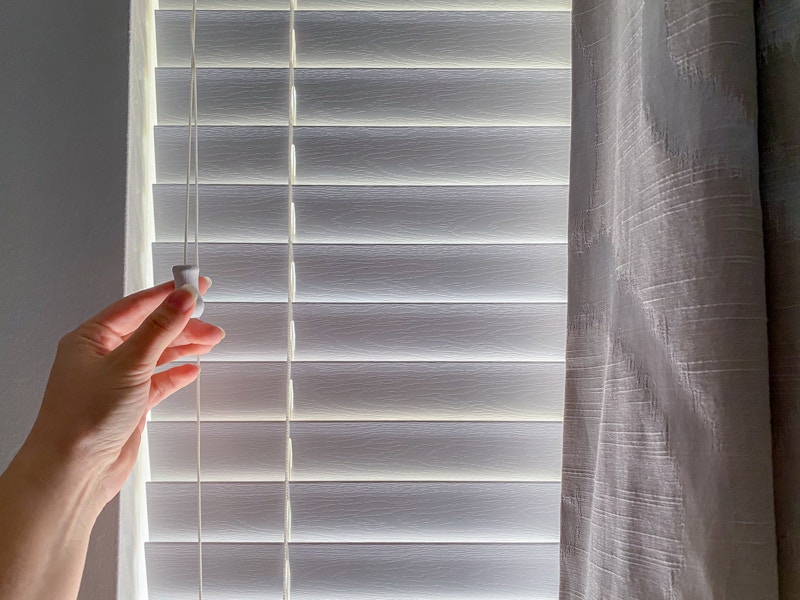
Replacing windows is expensive (although you can get a tax credit if you do it — read on for more). So if you’re not in the market to sink dollars into a full replacement, invest in some dark blinds that’ll block the heat leaking in through your windows.
The key is to select high-quality thermal curtains. These will block light, along with hot air and cold air, depending on the season. Look for cotton or polyester fabrics with more than one layer. The more tightly woven, the better. You can use your phone’s flashlight to see how much light gets through and how tight the fabric weave is. You’ll also want to look for curtain panels that have an opaque lining, keeping sunlight as well as ___ temperatures from entering your home.
Aim to spend around $15 – $30 per panel for these curtains. The quality of the fabric is just as important as the price. It’s not a true deal if the panels you purchased don’t actually save you money on your electric bill.
12. Seal cracks and drafty window openings with caulk or weatherstripping.
Caulk is a great little tool because it’s not permanent. You can use this solution and remove it whenever you want. Any little change you can make to block hot or cold air from coming through your windows is a huge win.
13. Open windows at night and close them in the morning.
If you live somewhere that gets cool at night, make this your new religion: Open all the windows in the house before you go to bed. Close all the windows and blinds (preferably thermal blinds!) in the morning when you get up. The idea is to let all the cool air in, and then block all heat and warm air during the day.
14. Don’t use your oven or stove to cook on the hottest days.
Or if you do, keep it closed as much as possible! This is two-pronged. First, using the oven and stove makes the home warmer, forcing your air conditioning to work harder and use more power. Second, every time you open the oven door, the internal oven temperature will drop up to 25 degrees, so your oven has to work harder to heat up again.
My family makes epic sandwiches, salads, and other cold foods for dinner on the hottest summer days.
15. Or use a microwave instead.
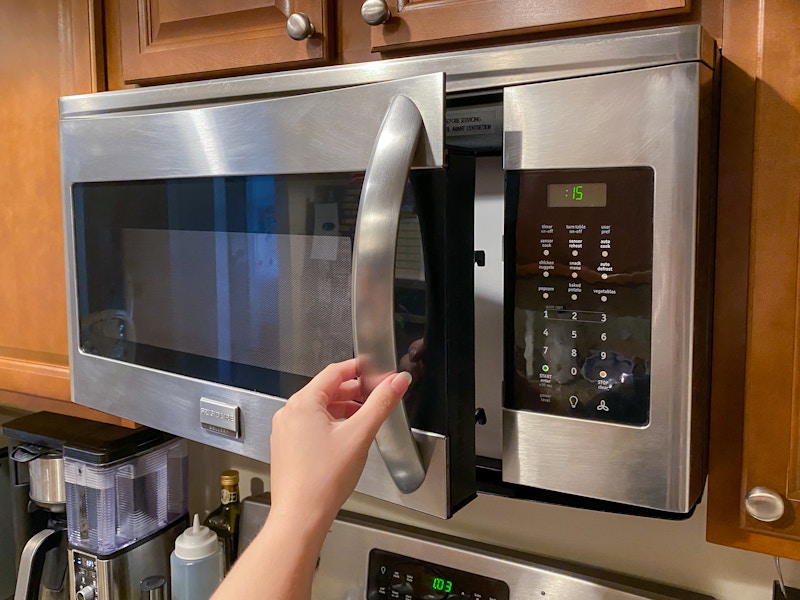
Small appliances like Air Fryers, microwaves, toasters, and even Instant Pots use less electricity than large appliances. Microwaves especially won’t add any extra heat to your home while cooking either. Look for deals on small appliances at Kohl’s, where you can earn Kohl’s Cash to spend toward future purchases.
16. Set your hot water heater to a max 120 degrees Fahrenheit.
Water heater manufacturers suggest a temperature between 120 – 140 degrees. According to the Department of Energy, 120 degrees will decrease your monthly power expense by staying on the lower end of the suggested temperature.
17. Hang your clothes to dry outside (and keep your dryer vent clean if you use it!).
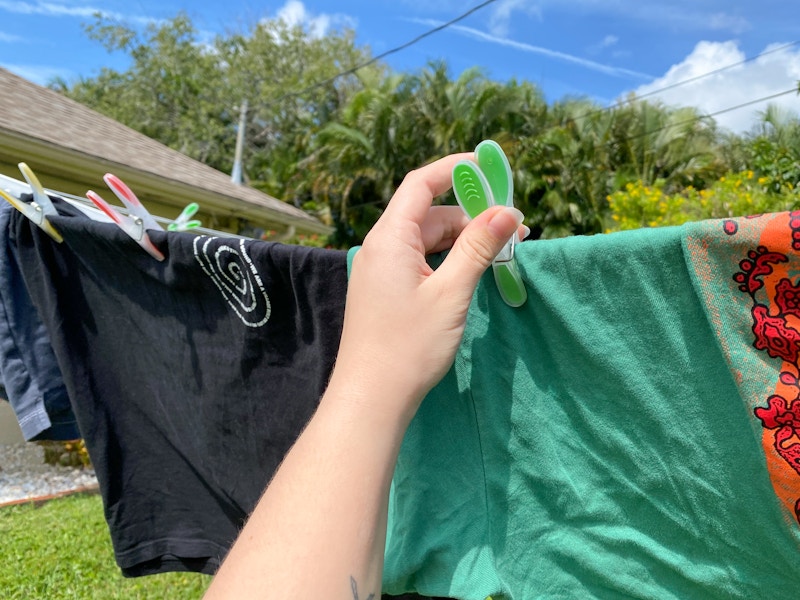
Electric dryers cost between $0.24 and $0.72 per hour. This obviously depends on your local electricity cost, the dryer brand, and let’s be honest, the size of your laundry loads. Summer is a great time to hang dry your laundry and give your dryer a break from pulling electricity to run.
I did the math for the cost of running my dryer in an average week. I have two toddlers, so we average about 4 – 5 loads of laundry each week. As a rough estimate, I’d save (at the very least) around $50 per year on my electric bill.
If air drying isn’t possible, be diligent about cleaning out your dryer vent and keeping the appliance clean so that it doesn’t have to work harder than needed.
18. Use cold water when doing laundry so you’re not spending money heating water.
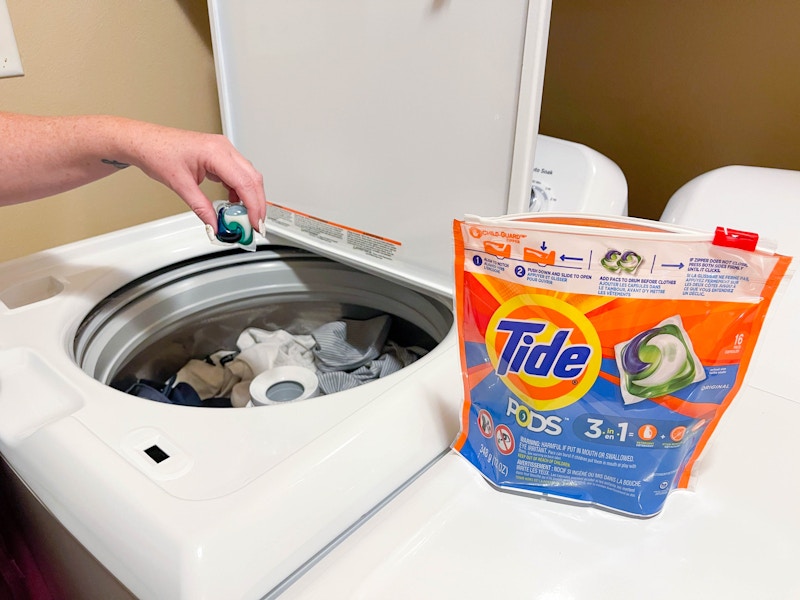
According to the Department of Energy, using cold water for your loads will save on your power bill because you’re not heating the water just to use it to wash clothes. If we look at the average cost of washing on hot and rinsing on warm, it’s about $0.68 per load. Rather, washing and rinsing on cold drops it down to $0.04 per load. This works out to around $63 per year for the average household. When you add in the savings of air-drying clothes, you could save over $100 per year on laundry-related energy costs.
Pro tip: According to Consumer Reports, front-loaders and high-efficiency machines run 10% cooler than machines with top-loading agitators.
19. Hand-washing dishes doesn’t save on your electric bill. Use your dishwasher.
You can use 20 gallons or more of water when you wash a load of dishes by hand. Alternatively, dishwashers use closer to 4 – 5 gallons per cycle. Especially if you’ve got an energy-efficient dishwasher. Similar to your washing machine, when you use a dishwasher, you’re only heating the water that needs to be hot. When you wash dishes by hand, you’ll most likely run warm to hot water the entire time, costing money to heat it.
Find out how to get Lowe’s appliances on the cheap.
20. But let your dishes air-dry.
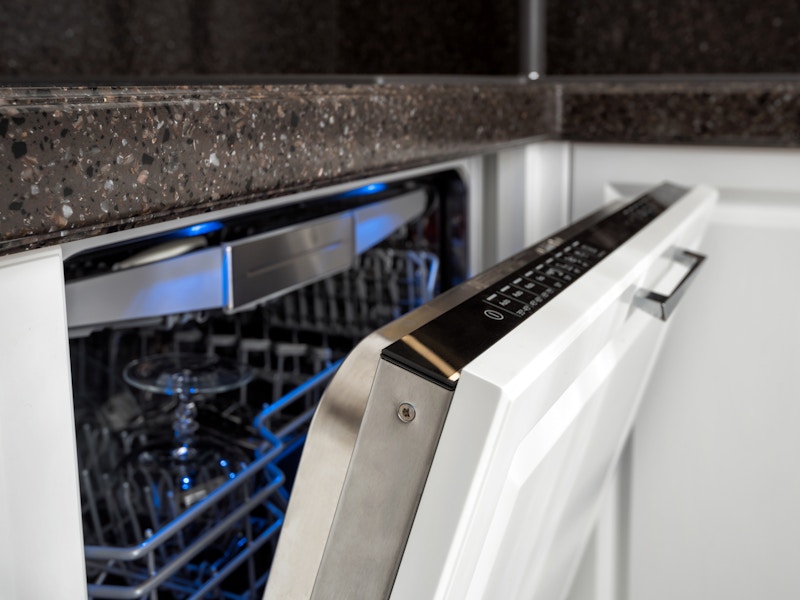
You’ll still use power to run the air-dry setting, but it’ll be 15% less power since it’s only required to move air around, not to heat the air.
21. Replace your showerhead with an energy-efficient one.
In addition to using less water, you’ll use less power when you install an energy-efficient shower head. The EPA estimates that the average family could save more than 330 kilowatt hours of electricity in a year just by doing this one thing. That’s enough power to run a home for 11 days! Imagine the savings on your power bill.
22. How to save on electricity in winter and summer? Keep your air ducts clean.
Just like with dryer lint, air ducts that are full or blocked by debris and dust can make your HVAC system work less efficiently. The result? It uses more power to do a job it could do with less power if the obstacles were removed.
The U.S. Department of Energy notes families can save as much as 20% to 30% simply by doing proper equipment maintenance.
23. Get a federal tax credit for your energy-efficient home improvements.
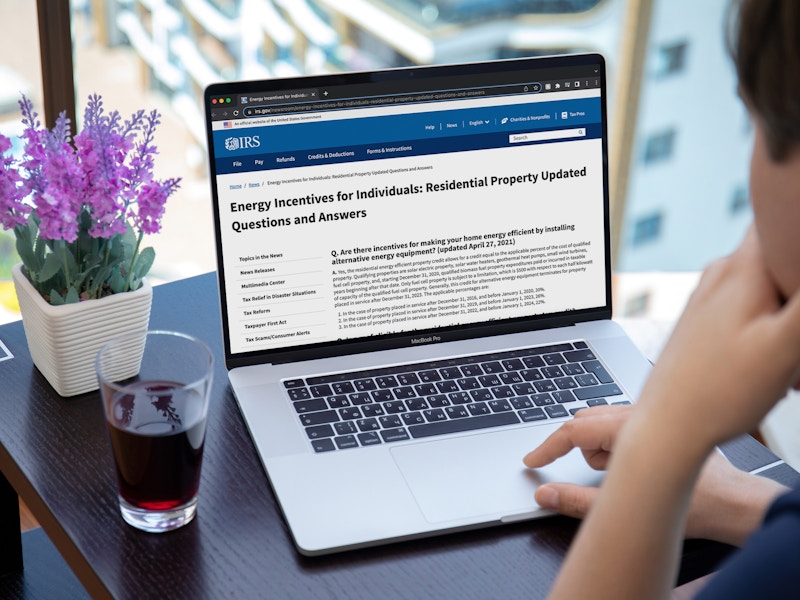
You can get a federal tax credit for certain upgrades you make to your home. For example, if you put in any of these, you can get up to 10% of your cost back (up to $500).
Energy-efficient exterior windows, doors, or skylights
Roofs and roof products
Insulation
Replacing these items is, of course, a huge financial investment, so I’m not recommending you do it in order to save money on your electric bill. More like if you’re doing these improvements this year, make sure you get a tax credit for them.
Related: How to save on your kitchen remodel.
24. If you’re replacing your roof, opt for white or another light color.
White roofs keep homes cooler with less energy. An inexpensive elastomeric coating can easily turn your roof white (with the help of a paint tray and roller) — and save you money as well.
25. Replace broken or defective old appliances with Energy Star-rated products.

According to Consumer Reports, new washing machines that have the Energy Star label use 25% less energy and up to 75% less water than machines did 20 years ago.
26. Use a solar savings calculator to determine if solar panels will save you money in the long run.
According to CostofSolar.com, a typical residential solar PV panel system in the U.S. costs $3.60/watt after installation. The solar panels can save you over $20,000 (net) over the course of 20 years (or $1,000 each year). Solar panels are a huge investment, so it may not be feasible if you’re already on a tight budget, but you can use this solar savings calculator to decide if it’s a good long-term savings move for you.
































Tell us what you think